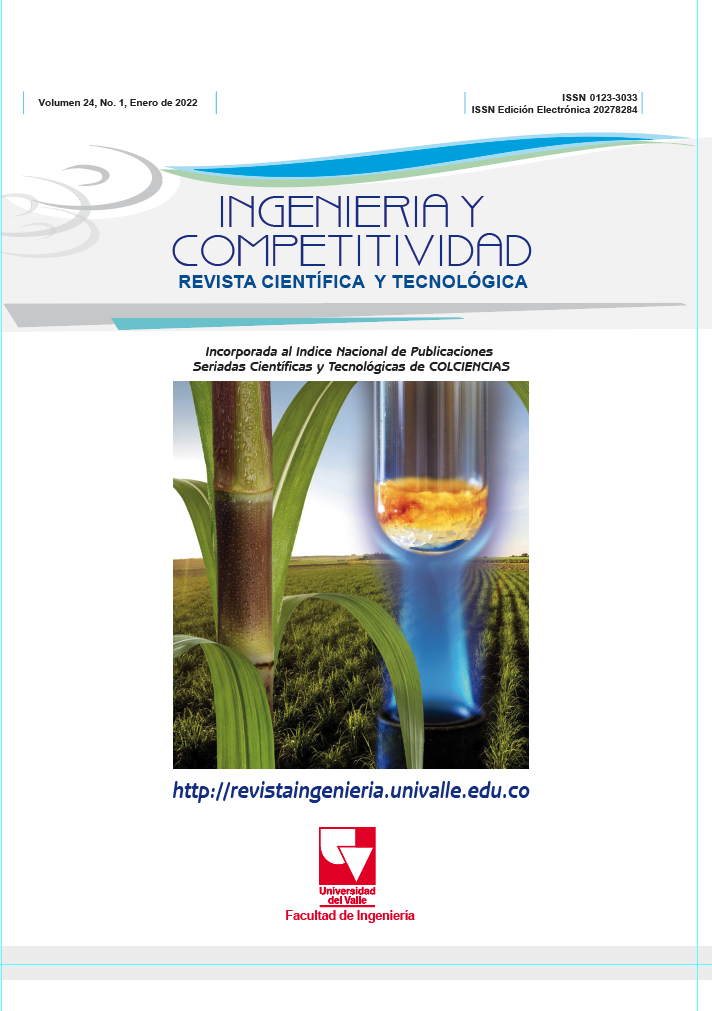Estudio de plataformas de monitoreo para seleccionar la pila tecnológica base de un sistema de analíticas especializado para pruebas de software
Contenido principal del artículo
Para mejorar la calidad de las aplicaciones web, es necesario implementar estrategias de pruebas automatizadas que permitan evaluar integralmente los atributos de funcionalidad y desempeño, los cuales se ven directamente afectados por el comportamiento del hardware de los servidores donde están alojadas. Así como los equipos de IT monitorean la infraestructura que soporta las aplicaciones, las automatizaciones deberían apoyarse en plataformas de monitoreo con analíticas especializadas de pruebas de software. Este artículo presenta la evaluación de cuatro pilas tecnológicas, lo cual permitirá seleccionar la más adecuada para incluirla en el desarrollo de una plataforma especializada en analíticas de calidad de software. Las cuatro pilas de este estudio son: PALG, TICK, ELK, AM. Este artículo explicará las características y diferencias de las pilas frente a diversos componentes como: base de datos, filtrado de información, recolección de métricas del sistema operativo, sistema de alertas, ingesta y visualización de datos. Luego se describen simulaciones y pruebas realizadas sobre cada una de ellas para evaluar sus capacidades. Finalmente se emiten unas conclusiones que permitirán seleccionar la pila tecnológica que será utilizada en el desarrollo de la plataforma de monitoreo o sistema de analíticas especializadas para soportar la realización de pruebas de software a las aplicaciones.
- calidad de software
- ingesta de datos
- pila tecnológica
- plataformas de monitoreo
(1) Finstad K. The usability metric for user experience. Interact Comput. 2010;22(5):323–7. https://doi.org/10.1016/j.intcom.2010.04.004.
(2) ¿Por qué necesitas realizar pruebas de rendimiento a tu aplicación? Software testing bureau [Internet]. 2019 [cited 2021 Aug 1]. Available from: https://www.softwaretestingbureau.com/cuanta-carga-puede-soportar-tu-aplicacion/.
(3) Prometheus Authors. Data model. Prometheus.io [Internet]. 2016 [cited 2021 Jan 14]. Available from: https://prometheus.io/docs/concepts/data_model/.
(4) Compare InfluxDB con bases de datos SQL. influxdata.com [Internet]. 2015 [cited 2021 Mar 2]. Available from: https://docs.influxdata.com/influxdb/v1.8/concepts/crosswalk/.
(5) John AT, Chika Amadi B, Chima Umeokpala F. Detection of Anomalies in a Time Series Data using InfluxDB and Python. arXiv:2012.08439 [Preprint]. 2020 [cited 2021 Mar 2]. Available from: https://arxiv.org/abs/2012.08439.
(6) Cuervo V. ¿Qué es Elasticsearch?. arquitectoit.com [Internet]. 2019 [cited 2021 Mar 2]. Available from: http://www.arquitectoit.com/elasticsearch/que-es-elasticsearch/.
(7) Martinviita M. Time series database in Industrial IoT and its testing tool [Master’s thesis]. University of Oulu, Degree Programme in Computer Science and Engineering; 2018. Available from: http://urn.fi/URN:NBN:fi:oulu-201811093007.
(8) Azure Monitor. Microsoft [Internet]. 2014 [cited 2021 Mar 2]. Available from: https://azure.microsoft.com/es-es/services/monitor/.
(9) Martín Olías P. Prueba de concepto Azure Monitor [Tesis de pregrado]. Universitat oberta de Catalunya; 2020. Available from: http://openaccess.uoc.edu/webapps/o2/bitstream/10609/108786/6/mmendozafTFG0120memoria.pdf.
(10) Prometheus Authors. Management API. Prometheus.io [Internet]. 2019 [cited 2021 Mar 2]. Available from: https://prometheus.io/docs/prometheus/latest/management_api/
(11) Documentación de Chronograf 1.8. influxdata.com [Internet]. 2017 [cited 2021 Mar 2]. Available from: https://docs.influxdata.com/chronograf/v1.8/.
(12) Kibana: Explora, visualiza y descubre datos. elastic.co [Internet]. 2020 [cited 2021 Mar 2]. Available from: https://www.elastic.co/es/kibana.
(13) Roles, permisos y seguridad en Azure Monitor. Documentos de Microsoft [Internet]. 2021 [cited 2021 Mar 2]. Available from: https://docs.microsoft.com/es-es/azure/azure-monitor/roles-permissions-security.
(14) Perera N, Otarán F. Propuesta de una solución de monitoreo para sistemas del CeSPI [Tesis de pregrado]. Universidad Nacional de La Plata; 2017. Available from: http://sedici.unlp.edu.ar/handle/10915/61525
(15) Documentación de Telegraf 1.17. influxdata.com [Internet]. 2016 [cited 2021 Mar 2]. Available from: https://docs.influxdata.com/telegraf/v1.17/.
(16) Elastic Stack and Product Documentation. elastic.co [Internet]. 2015 [cited 2021 Jan 14]. Available from: https://www.elastic.co/guide/index.html.
(17) ¿Qué es Azure Application Insights? - Monitor de Azure. Documentos de Microsoft [Internet]. 2021 [cited 2021 Mar 2]. Available from: https://docs.microsoft.com/en-us/azure/azure-monitor/app/app-insights-overview.
(18) Prometheus Authors. Alertmanager. Prometheus.io [Internet]. 2016 [cited 2021 Mar 2]. Available from: https://prometheus.io/docs/alerting/latest/alertmanager/.
(19) Kapacitor 1.5 Documentation. influxdata.com [Internet]. 2016 [cited 2021 Mar 2]. Available from: https://docs.influxdata.com/kapacitor/v1.5/.
(20) Azure Monitor documentation - Azure Monitor. Microsoft Docs [Internet]. 2021 [cited 2021 Jan 14]. Available from: https://docs.microsoft.com/en-us/azure/azure-monitor/.
(21) Grafana documentation. Grafana.com [Internet]. 2019 [cited 2021 Jan 14]. Available from: https://grafana.com/docs/grafana/latest/.
Descargas

Esta obra está bajo una licencia internacional Creative Commons Atribución-NoComercial-CompartirIgual 4.0.
Los autores que publican en esta revista están de acuerdo con los siguientes términos:
Los autores ceden los derechos patrimoniales a la revista y a la Universidad del Valle sobre los manuscritos aceptados, pero podrán hacer los reusos que consideren pertinentes por motivos profesionales, educativos, académicos o científicos, de acuerdo con los términos de la licencia que otorga la revista a todos sus artículos.
Los artículos serán publicados bajo la licencia Creative Commons 4.0 BY-NC-SA (de atribución, no comercial, sin obras derivadas).


 https://orcid.org/0000-0002-5268-7436
https://orcid.org/0000-0002-5268-7436 https://orcid.org/0000-0002-2138-9508
https://orcid.org/0000-0002-2138-9508 https://orcid.org/0000-0001-7384-7171
https://orcid.org/0000-0001-7384-7171


